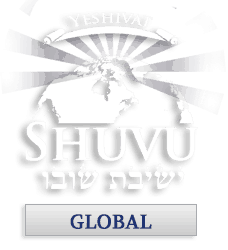וַיִּקְרָ֖א אֶל־משֶׁ֑ה וַיְדַבֵּ֤ר יְהֹוָה֙ אֵלָ֔יו מֵאֹ֥הֶל מוֹעֵ֖ד לֵאמֹֽר: דַּבֵּ֞ר אֶל־בְּנֵ֤י יִשְׂרָאֵל֙ וְאָֽמַרְתָּ֣ אֲלֵהֶ֔ם אָדָ֗ם כִּי־יַקְרִ֥יב מִכֶּ֛ם קָרְבָּ֖ן לַֽיהֹוָ֑ה מִן־הַבְּהֵמָ֗ה מִן־הַבָּקָר֙ וּמִן־הַצֹּ֔אן תַּקְרִ֖יבוּ אֶת־קָרְבַּנְכֶֽם: אִם־עֹלָ֤ה קָרְבָּנוֹ֙ מִן־הַבָּקָ֔ר זָכָ֥ר תָּמִ֖ים יַקְרִיבֶ֑נּוּ אֶל־פֶּ֜תַח אֹ֤הֶל מוֹעֵד֙ יַקְרִ֣יב אֹת֔וֹ לִרְצֹנ֖וֹ לִפְנֵ֥י יְהֹוָֽה:
And He called to Moses, and the Lord spoke to him from the Tent of Meeting, saying, Speak to the children of Israel, and say to them: When a man from [among] you draws near by a sacrifice to the Lord; from animals, from cattle or from the flock you shall draw near by your sacrifice. If his sacrifice is a burnt offering from cattle, an unblemished male he shall draw near by it. He shall draw near by it willingly to the entrance of the Tent of Meeting, before the Lord.
Leviticus 1:1-3
This week’s Torah portion begins the book of Vayikra, Leviticus. This is typically the first book of Torah taught to children. Vayikra is also known as Torat Kohanim, the instruction of the priests. If you have not studied Vayikra extensively, this might seem a bit odd. But on close inspection, this order of teaching makes a great deal of sense.
Vayikra outlines the sacrificial system. Understanding this system is foundational for understanding all of Scripture. The sacrificial system is often glossed over, but its importance cannot be overstated. For Yeshua and his disciples, the sacrificial system was central to their daily relationship with Hashem.
The word for sacrifice, Korban, has at its root, the term that means drawing near. Usual translations also take other terms with the same root and translate them as bringing a sacrifice.
The correct understanding of the Hebrew text involves the concept of drawing near. That is, through the bringing of the sacrifice one draws near to Hashem. The sacrifice itself is a drawing near. The process of the sacrifice is a drawing near. Man is caused to draw near to Hashem through the sacrifice or offering. In the Torah, there is no other way to draw near to Hashem than through the sacrificial system.
Singing, dancing, adoring Hashem, all vitally important. But, only through the sacrifice do we draw near to Hashem. Drawing near to Hashem is intimately connected with the sacrificial system. They cannot be separated.
When Nebuchadnezzar destroyed the Temple, Israel’s method for drawing near to Hashem was obliterated. This calamity was arguably the worst catastrophe in all of human history. If we could not draw near to Hashem, has Hashem forsaken us? The prophets give us the answer. No, Hashem has not forsaken us, nor will he forsake us. Therefore, without the Temple, how do we approximate, or commemorate, drawing near to Hashem? This was the purpose of the installation of the synagogue service. The synagogue service commemorates the service in the Temple of the sacrifices through which we draw near to Hashem. The moment of the sacrifices in the synagogue services is the Amidah. The entire reason for synagogue service, Aravit, Shacharit, Musaf, and Mincha, is the recitation of the Amidah. Without the Temple, the recitation of the Amidah is as close as we can to drawing near to Hashem. In Torah, we draw near to Hashem through the sacrifices only. Since we have no Temple, the closest we can come is the recitation of the Amidah. This is the entire purpose of the synagogue service. As we study Vayikra, let us keep in mind the ultimate purpose of drawing near to Hashem. Shabbat shalom.
